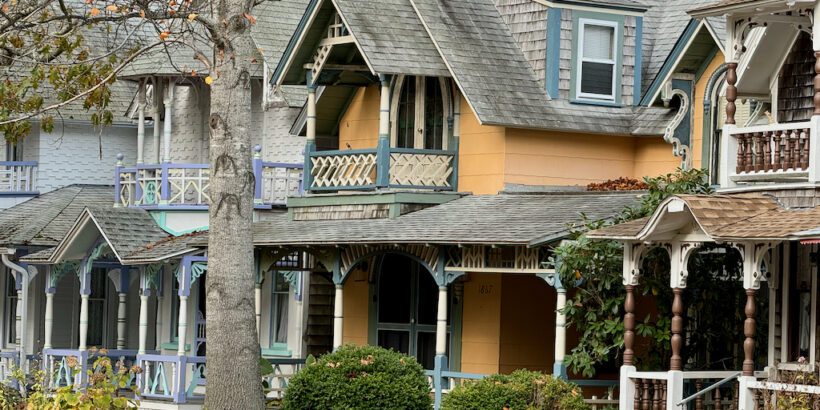When I first stumbled upon photos of the Martha’s Vineyard Gingerbread Houses, I thought, “Oh that’s cute, a little row of fairytale-like cottages that we might put as a footnote in our itinerary when in Martha’s Vineyard.”
But upon further investigation, I discovered that these enchanting gingerbread houses numbered well over 300, effectively creating a quaint little village with a rich history spanning nearly two centuries.
My intrigue then grew exponentially, prompting us to make a dedicated visit. And I’m glad we did.
In this article, I’ll delve into the extensive history of these unique houses and offer valuable tips on how to experience them, be it through exploration or a cozy stay in one of these delightful abodes.
Table of Contents
What are the Martha’s Vineyard Gingerbread Houses?
The Martha’s Vineyard “Gingerbread Houses” are a collection of over 300 colorful and ornately decorated cottages located in the town of Oak Bluffs on Martha’s Vineyard, an island off the coast of Massachusetts.
These cottages were originally built in the late 19th century as part of a Methodist campground and resemble the quaint cottages in a storybook or even gingerbread houses. Today, they are a popular tourist attraction and an iconic symbol of the island’s charm and history.
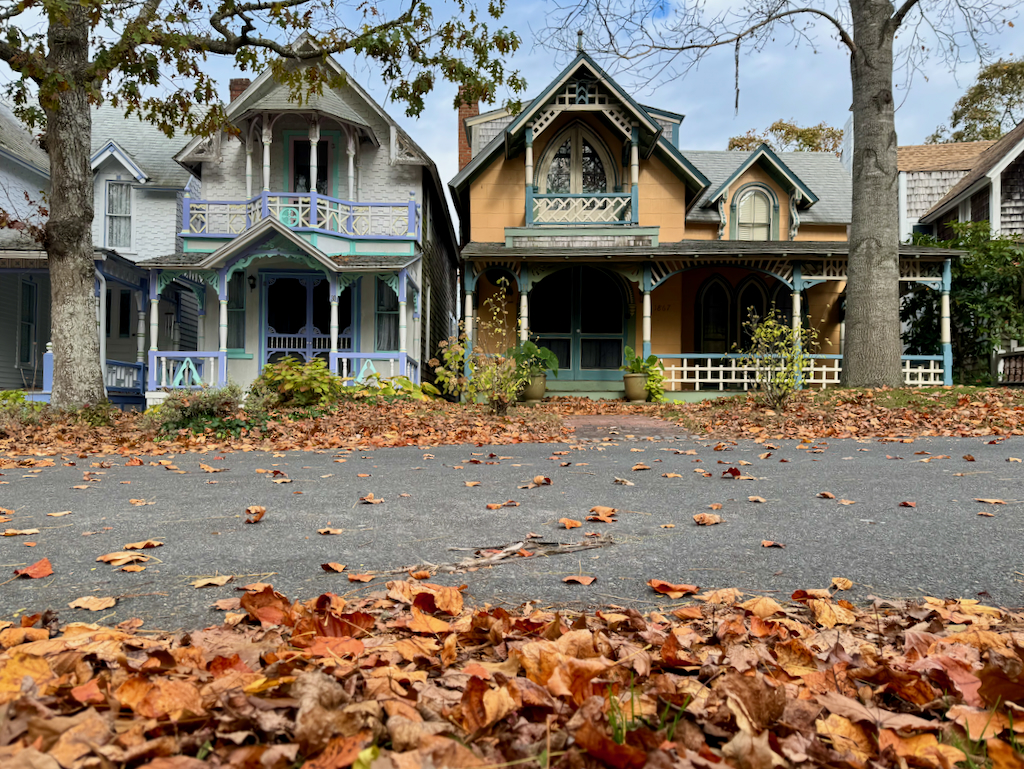
A brief history of the Martha’s Vineyard Gingerbread Houses
According to Martha’s Vineyard Campmeeting Association (MVCMA), the roots of the gingerbread houses go back to 1835 when Jeremiah Pease, in collaboration with six individuals from the Edgartown Methodist Church, procured a half-acre of land with the intention of establishing a religious camp meeting on Martha’s Vineyard.
(Some refer to it as the first summer religious camp established in the country.)
These camp meetings were a hallmark of the Second Great Awakening, characterized by open-air religious gatherings in rustic settings, where attendees would pitch tents or construct simple cabins.
These spiritual gatherings often extended over several days or even weeks and featured extensive preaching, fervent prayer, and uplifting hymns aimed at strengthening one’s faith. They could be quite intense.
(Some churches still carry on these traditions, albeit often within the confines of their own walls and not necessarily in the great outdoors.)
By 1855, the popularity of this religious campsite, known as “Wesleyan Grove,” exploded. It had grown exponentially from a mere nine tents in 1835 to a small bustling community of 200 tents. There could be up to 20,000 attendees at the services!
Up to that point, these gatherings had primarily been more serious religious affairs, but as their popularity surged, they took on a more family-friendly character.
Between 1855 and 1865, the landscape saw the emergence of an increasing number of family tents, and attendees extended their stays on the island mixing religious business with pleasure.
The MVCMA then acquired the 26 acres they had been renting in 1864, leading to the development of an interesting concentric pattern to foster community, which you can still see today.
By 1868, this whimsical village boasted a grand total of 570 tents. Some of these provided spaces for children to attend prayer and church meetings, while others served as makeshift stores, boarding tents, barber shops, and various other conveniences.
The emergence of the charming cottages occurred during the years 1859 to 1864. Many of these cottages bore a resemblance to the tents they replaced, boasting narrow footprints and peaked roofs.
According to Martha’s Vineyard Museum’s research librarian, A. Bowdoin Van Riper, the primary aim was to construct these abodes swiftly, lightly, and cost-effectively.
Their design choices, such as keeping the front and upper doors open at all times, aimed to recreate the experience of living in a tent, where life was open to passersby and continuously on display.
With the passage of time, these cottages underwent a transformation into the whimsical and charming structures we admire today.
They adopted the architectural style known as “Carpenter Gothic,” seamlessly blending Gothic elements like pointed arches, steep gables, and towers into light-frame construction.
Some of these Carpenter Gothic structures are simpler like the American Gothic House but the style used here utilized the more flamboyant “gingerbread trim” which was popular in the 1860s.
The development of these cottages coincided with the invention of the power-driven jig saw or scroll saw, which made it easier to craft the intricate “gingerbread trims” you see today.
With ample wood and the requisite tools, a bit of a race among cottage owners and builders to outdo each other was sparked, resulting in increasingly elaborate woodwork adorning these cottages.
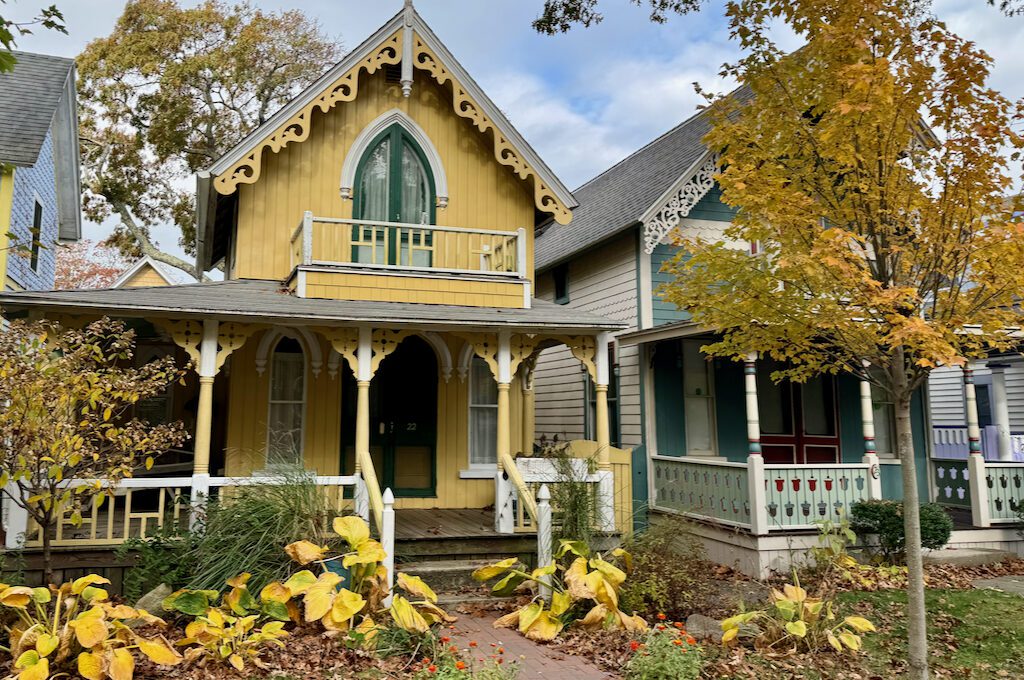
The origins of the color schemes that grace these cottages remain a bit of a mystery, as the original photographs of the campground were in black and white, leaving their chromatic evolution somewhat open to interpretation.
While some of the cottages were destroyed, moved, or combined with other cottages, over 300 still exist today. And they have since become a beloved cultural and historical landmark on Martha’s Vineyard, attracting visitors with their unique architectural style.
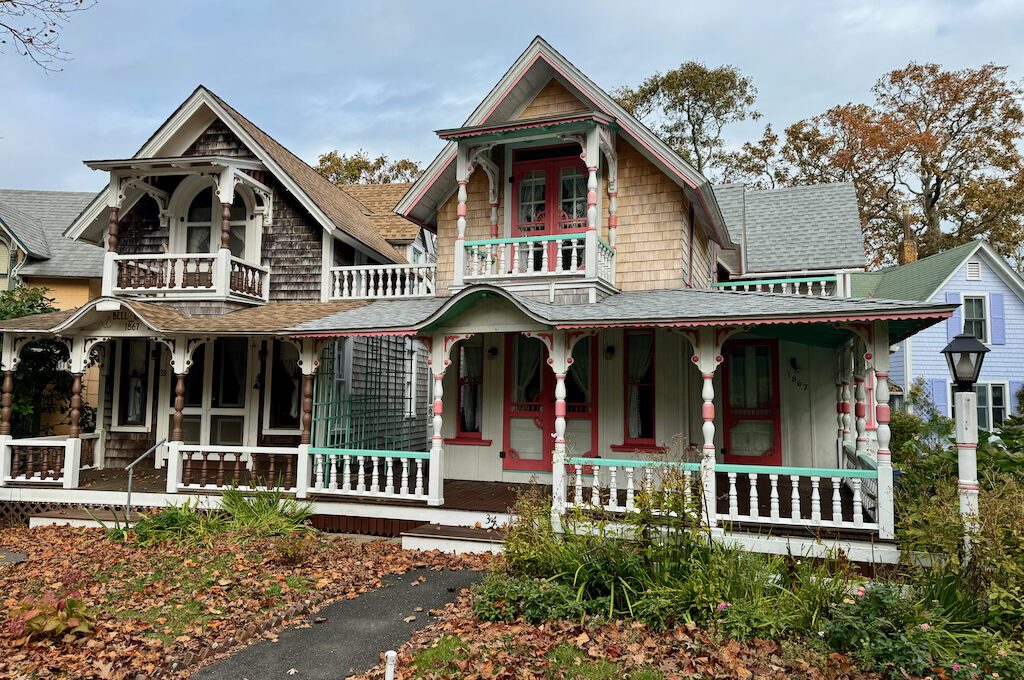
In 1978, the Martha’s Vineyard Campmeeting Association (MVCMA) achieved a significant milestone by earning a spot on the National Register of Historic Places.
And in 2005, the sprawling 34-acre campus earned the designation of a National Historic Landmark, highlighting its exceptional cultural and architectural significance.
These iconic cottages serve as a testament to the island’s rich history and the remarkable fusion of religious tradition with boundless architectural creativity. Their presence not only embodies the unique character of Oak Bluffs but also contributes to the distinctive charm of Martha’s Vineyard as a whole.
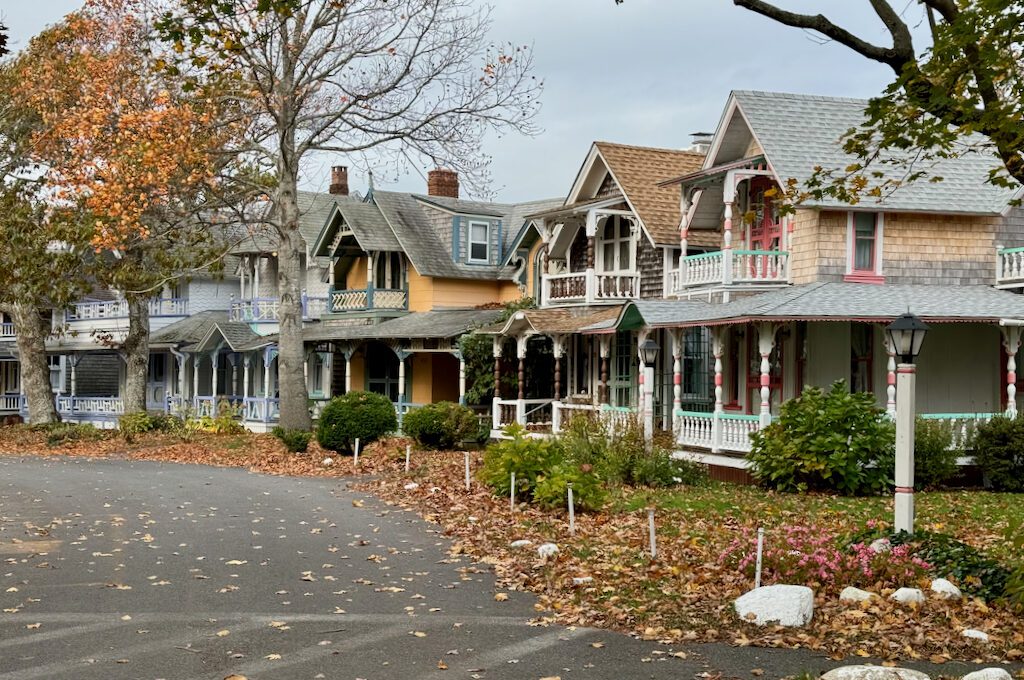
Exploring the Martha’s Vineyard Gingerbread Houses
We decided to take a stroll through the 30 plus acre Wesleyan Grove on a cold November morning during the off season, which meant that the grounds were largely full of leaves and devoid of people.
This was nice because it made it a lot easier to focus on enjoying the architecture rather than dealing with crowds or getting in the way of photos.
However, I’d like to note that visiting during the summer and witnessing the “grand Illumination” which takes place in August when they illuminate paper or silk lanterns (and have done so for 150 years) sounds like a really beautiful and interesting thing to see.
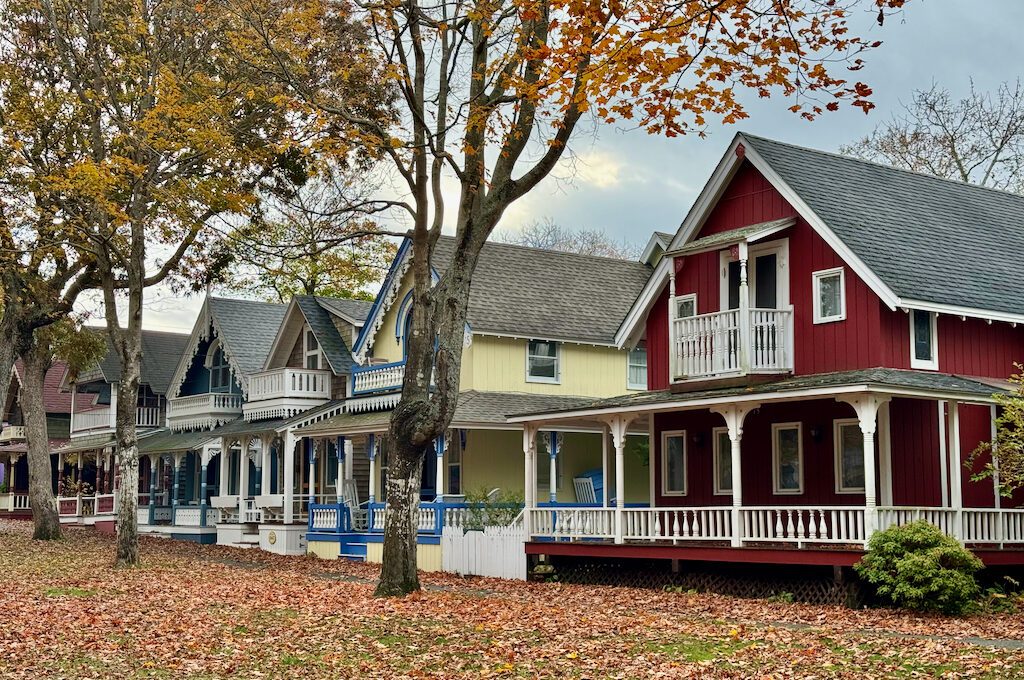
We found plenty of parking right on Lake Ave which was free and could be a good spot to park although I guess that during the busy summer months parking is much more difficult to come by.
As we roamed through the charming rows of these cottages — many neatly encircling the historic Tabernacle — we noticed that construction was underway at the Tabernacle so we weren’t able to get a good look at the structure.
While strolling along the circular pathways, the layout’s heritage as a campground was unmistakable and you could understand how it could contribute to a better community-focused experience.
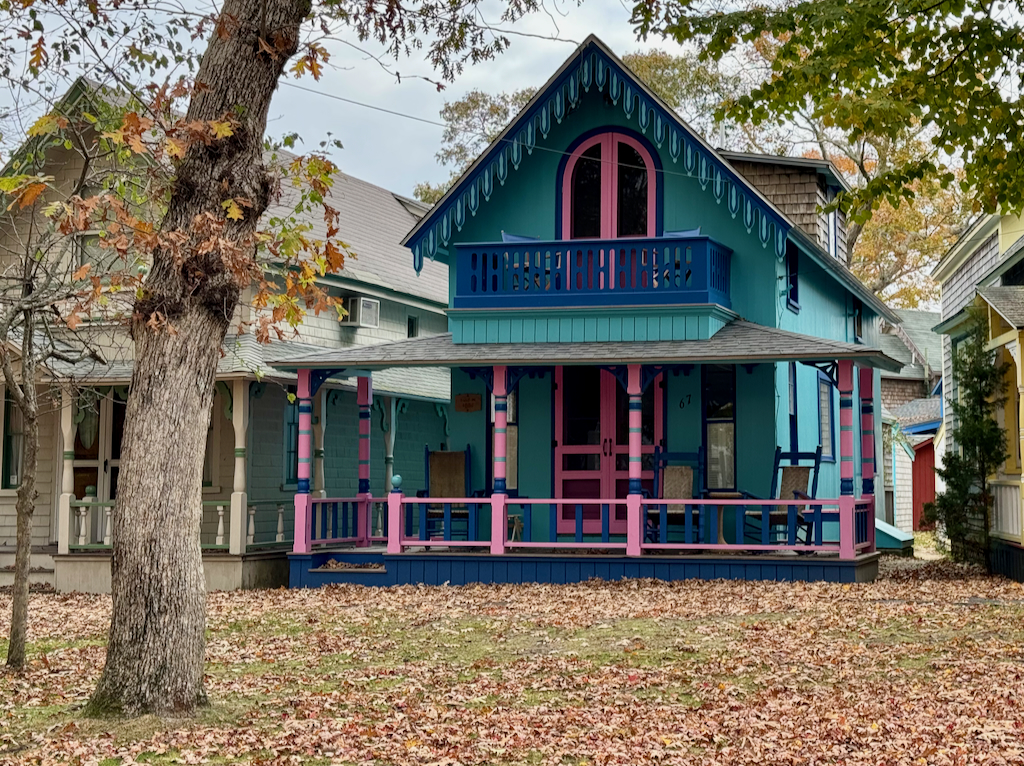
There’s a museum on the premises known as the Martha’s Vineyard Camp Meeting Association Cottage Museum. But regrettably, we missed it during our visit since it is only open from Memorial Day weekend through mid-October.
Admission is only a few bucks, and if you’re curious to explore further, I believe that the museum can help arrange a guided tour.
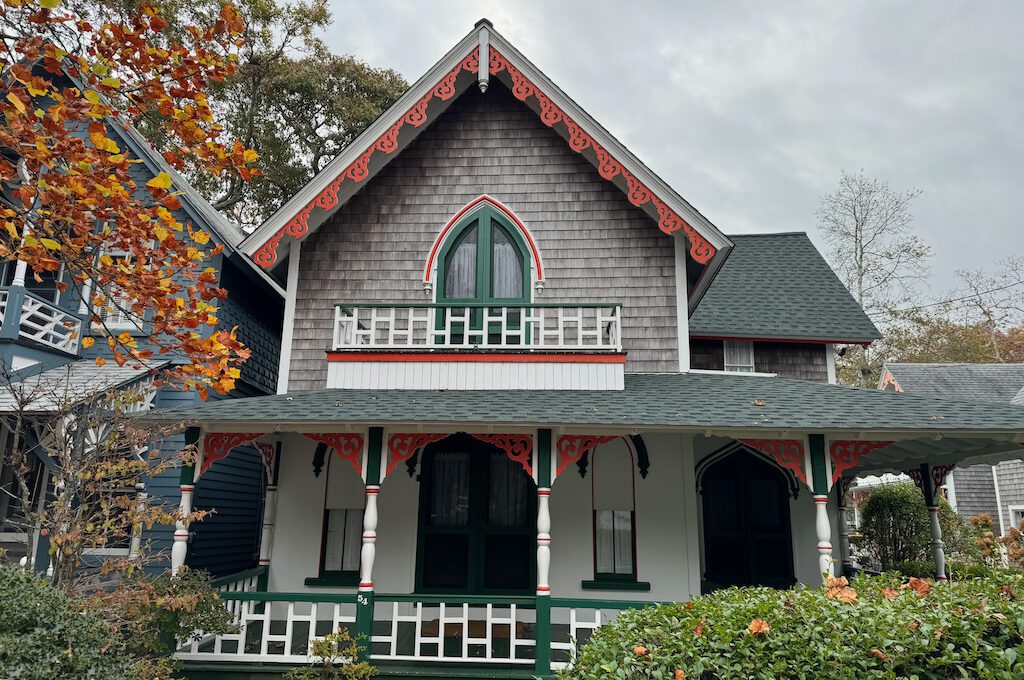
The timing of our visit couldn’t have been more perfect for photos – the autumnal foliage was still somewhat ablaze, and the ground was adorned with a carpet of fallen leaves, enhancing the vibrant colors of the gingerbread houses.
The sheer number of these cottages was staggering, and their intricate details were nothing short of amazing.
Taking a closer look, we were captivated by the craftsmanship. Every nook and cranny revealed hidden delights and imaginative creativity, some of which is easy to miss if you aren’t paying close attention.
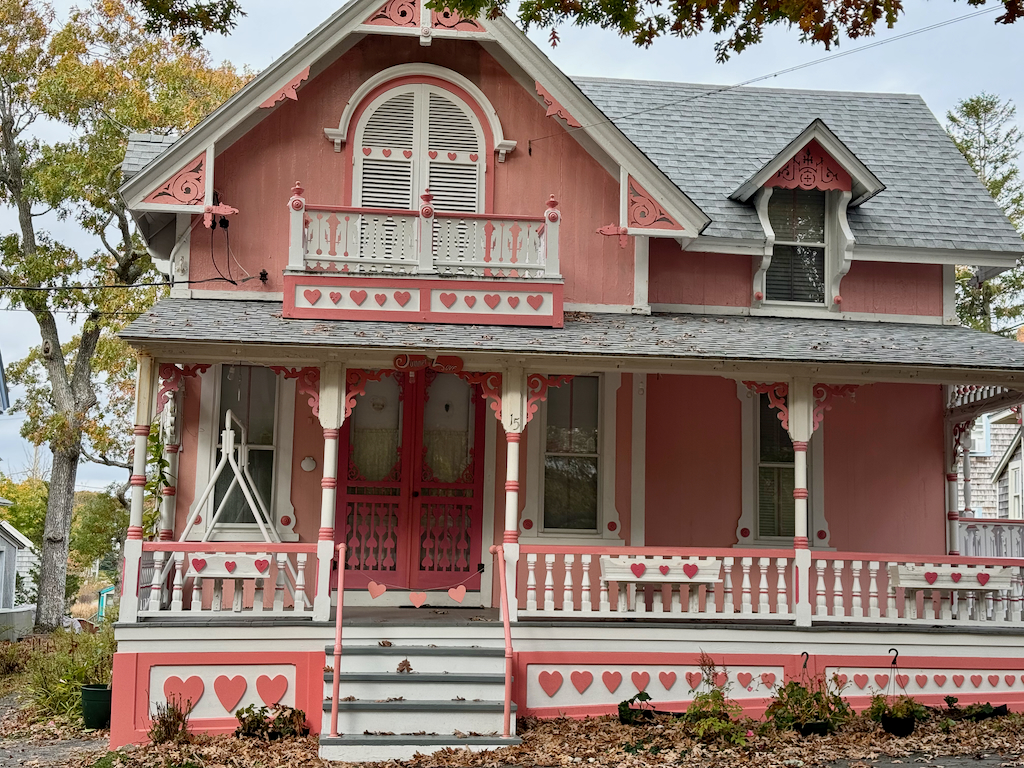
Some of these houses even embraced specific themes, like a playful nod to the Wizard of Oz.
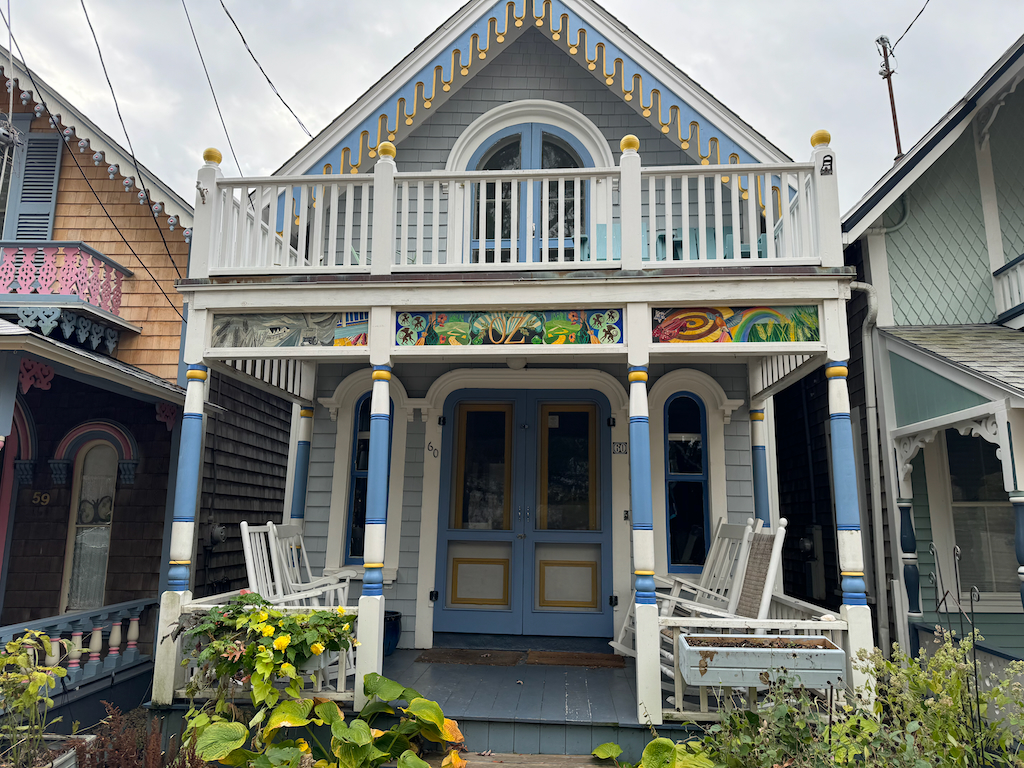
Initially, I had envisioned a modest line-up of charming cottages akin to San Francisco’s iconic Painted Ladies. But that definitely was not the case.
Stumbling upon an entire village of these gingerbread houses felt like stepping into a living fairytale. The sheer scale of creativity and the magical ambiance made it an overall enchanting experience and I highly recommend it!
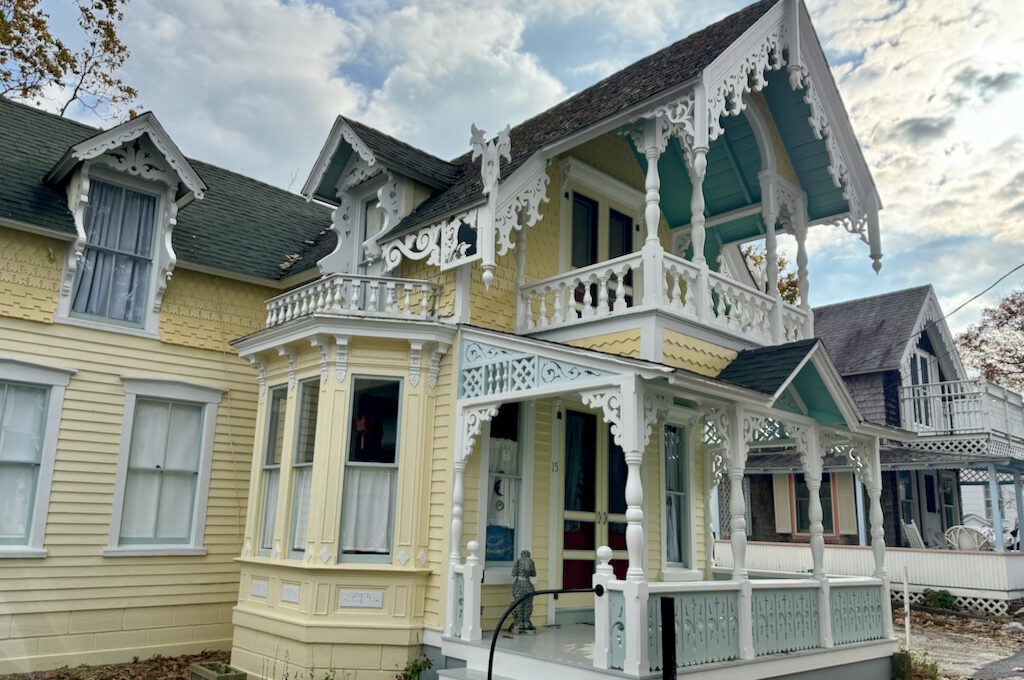
Booking a stay in the Martha’s Vineyard Gingerbread Houses
Like many things on islands such as Nantucket and Martha’s Vineyard, it’s very much a summertime destination.
This means that you won’t have the same options in shoulder season when looking for these bookings.
As mentioned, we saw quite a few of these colleges boarded up for the winter so it looks as if it’s much more difficult to rent one of these out during the off-season (although some of the boarded up cottages could’ve been boarded up by people who own them and don’t rent them out).
But if you do want to rent, whether in the summer or year-round, you have a few different options.
First, you could try the main website that has an inventory of rentals or this site here. The average per week to rent a Martha’s Vineyard Gingerbread House is about $3,000 per week. However, the larger cottages can run for significantly more than that, especially during peak season.
Here are some of the different addresses you can look at and their prices which were accurate for 2023:
- 9 Clinton Ave: $3,000/week
- 15 Cottage Park: $2,500/week
- 60 Lake Ave: $2,200 – $2,400/week
- 28 Rural Circle: $2,500/week
- 6 Trinity Park: $3,500/week
- 30 Trinity Park: $4,000 – $4,800/week
- 47 Trinity Park: $3,900 – $5,950/week
- 2 Fisk Ave: $2,800 – $3,000/week
- 27 Butler Ave: $3,000 – $4,500/week
- 59 Clinton Ave: $2,000 – $2,500/week
- 16 Victorian Park: $2,475/week
- 49 Trinity Park: $3,000/week
In addition to the website above you may be able to find some on AirBnB or VRBO but I’ve struggled to find any availability for these despite searching in many different months.
If you just want to rent them for one night, the daily rental could easily come in at about $1,000 per night. However, some of these may not allow for nightly rentals and you may be forced to rent them for at least one week.
One thing to note is that cottage owners are not allowed to allow pets (pets are not allowed in many areas around here).
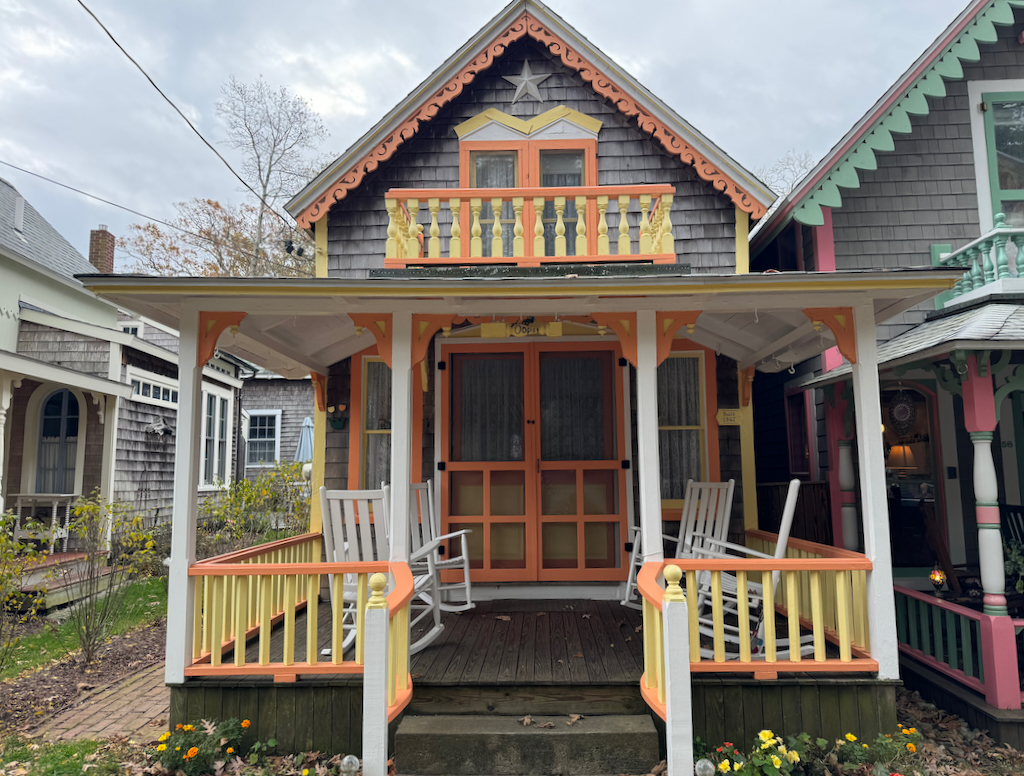
Final word
The renowned gingerbread houses of Martha’s Vineyard boast a captivating history that reaches back nearly two centuries, making them a truly remarkable destination in their own right. Their historical significance alone renders them a site well worth exploring. However, what truly sets them apart is their utterly unique architecture, which exudes a whimsical charm that’s simply irresistible.
For those seeking an even deeper immersion, renting one of these gingerbread houses promises an enchanting experience, although it’s worth noting that the cost can be on the steeper side, and availability may be a challenge depending on your chosen visit dates. But for those fortunate enough to secure a stay, it’s an opportunity to step into a world of sheer magic and beauty.
Daniel Gillaspia is the Founder of UponArriving.com and the credit card app, WalletFlo. He is a former attorney turned travel expert covering destinations along with TSA, airline, and hotel policies. Since 2014, his content has been featured in publications such as National Geographic, Smithsonian Magazine, and CNBC. Read my bio.

